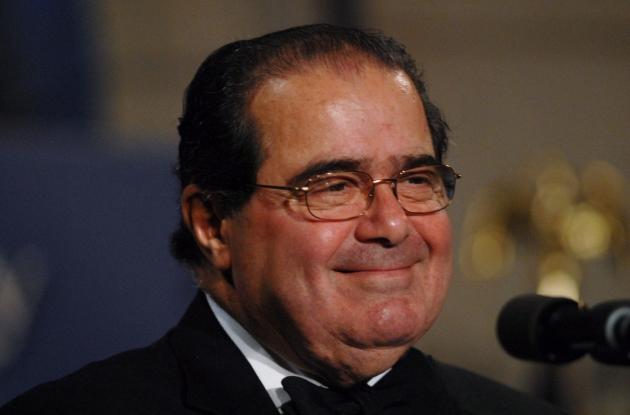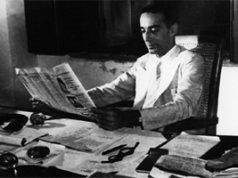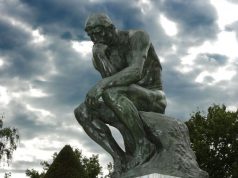(Siddhant Kohli wrote a response to the piece published below, which can be accessed here: ‘Judicial Activism and India’s Living Constitution.’)
“It is a principle of Constitutional spirit that the process of amending the Constitution shall not be used to break the constitution- but this is not written in the Constitution itself.”
Justice Antonin Scalia, an influential American Supreme Court lawyer passed away earlier this month. He leaves behind a rich legacy, albeit a controversial one. He belonged to the conservative wing of the Supreme Court, and differed significantly from many of his contemporaries in his strict interpretation of the Constitution.
Antonin Scalia was an originalist—a school of constitutional interpretation that holds the ‘meaning of the constitution as fixed at the time of enactment.’ The constitution, in his view, was not a living document—it didn’t need to be interpreted differently with the course of time and with each successive generation. The constitution was ‘dead, dead, dead’; and in its deadness lay its glory. Quoting Scalia:
“The only good Constitution is a dead Constitution. The problem with a living Constitution in a word is that somebody has to decide how it grows and when it is that new rights are – you know — come forth. And that’s an enormous responsibility in a democracy to place upon nine lawyers, or even 30 lawyers.”
Scalia’s intent was to preserve a document and interpret is as clearly as was humanly possible. The constitution was not to be tampered with, and this was not born out of an unthinking dogma, but from a belief that the original intent and moral convictions of the constitution would be lost if we progressively kept diluting them to keep up with the fad at the time. In interpreting the constitution, he echoed Madison: “If it, (the Constitution), is to mean whatever we want it to mean, then we should hasten the parchment to the fire.”
It is a different question whether Scalia did justice to the constitution whose essence and intent he swore to uphold. As rigid as his interpretation sounds, it is one that has much merit, even if one does not completely agree with it.
Contrast the American Constitution with the Indian one.
While there are schools of thought that interpret the American constitution as being either ‘living or dead’, the Indian constitution was conceived as a ‘living document.’ The founders made it far easier for it to be amended. The architect of the Constitution, B R Ambedkar, noted in his concluding speech that he had little doubt that it would be amended with time. He pointed out that compared to the American or the British constitution, the process of amending our constitution had been made far simpler. [1] The American constitution has had 27 amendments in its 227 year history; the Indian constitution, on the other hand, has had nearly a 100 in the 66 years of its existence.
Scalia probably would not have liked defending such a document, and would have had a harder time in deciphering its original intent. Our constitution probably does not lend itself too easily to an originalist interpretation, simply because it is too darn long. It would, in its complexity allow for a greater variety of interpretations, even if we try to determine its original intent.
Indeed, the question of what is central to the constitution is one that our democracy has grappled with. That was the question in Keshanvananda Bharti where the court came up with the famous ‘basic structure’ doctrine: the principle that the constitution has certain basic features which cannot be amended by the constitution. Now the curious fact is that it has not been conclusively established what is basic to the constitution. Not being explicitly defined, the court is to decide case by case on what is basic and what is not. So while there might be disagreement on what is central and unalterable in the constitution, we have in principle recognised that some matters need to be beyond the amending powers of the parliament. That is an important precedent if we are to preserve freedom in this country, and one our democracy has come to recognise.
A reader, Mr R Nanjappa, had shared some comments on a previous post, and they are very pertinent in this discussion:
“Our Constitution has worked so far, only because we had people who were soaked in the spirit of the rule of law, and had good sense, above all. And we had eminent Judges and great leaders of Constitutional law like Palkhivala, and guardians like Rajaji exercising eternal vigilance, who would raise their voice when needed. But we saw how our Judges acquiesced in the demands of committed judiciary during the Emergency and how thin is the consensus on the basic framework or basic structure of the Constitution. Even our eminent lawyers today are not agreed on the issue. If the Judiciary itself is divided on the concept of basic structure, what is the remedy?
It is a principle of Constitutional spirit that the process of amending the Constitution shall not be used to break the constitution- but this is not written in the Constitution itself. Having observed our judiciary and general constitutional matters for the last 50 years, I do not have the confidence that the basic structure of the Constitution will remain for the next 50 years- either in law or in judicial interpretation.. This idea or feeling is strengthened by the fact even in the US, leftist (calling themselves liberal) groups and judges are interpreting the Constitution in ways not in accordance with the spirit of the framers of the Constitution. After all, the US served as a model for us too, and today, they are setting global standards in everything.. So how long will it be here before we too follow such trends!”
It may be that our democracy comes closer to a consensus in the coming generations, and that the constitution comes to be interpreted in a manner that affords greater protection to our liberties. Or it may be, as Mr Nanjappa pointed out, that the basic structure doctrine would be diminished, in ‘law and in judicidal interpretation.’ That is a choice not merely before our judges and politicians, but with the people of India. For whether the constitution should be a living or a dead document, is it of little consequence if it does not live in the hearts of the people, who are its only keepers.
(Siddhant Kohli wrote a response to the present piece, which can be accessed here: ‘Judicial Activism and India’s Living Constitution.’)
****
(1) India’s Living Constitution, Times of India
Post Disclaimer
The opinions expressed in this essay are those of the authors. They do not purport to reflect the opinions or views of CCS.






